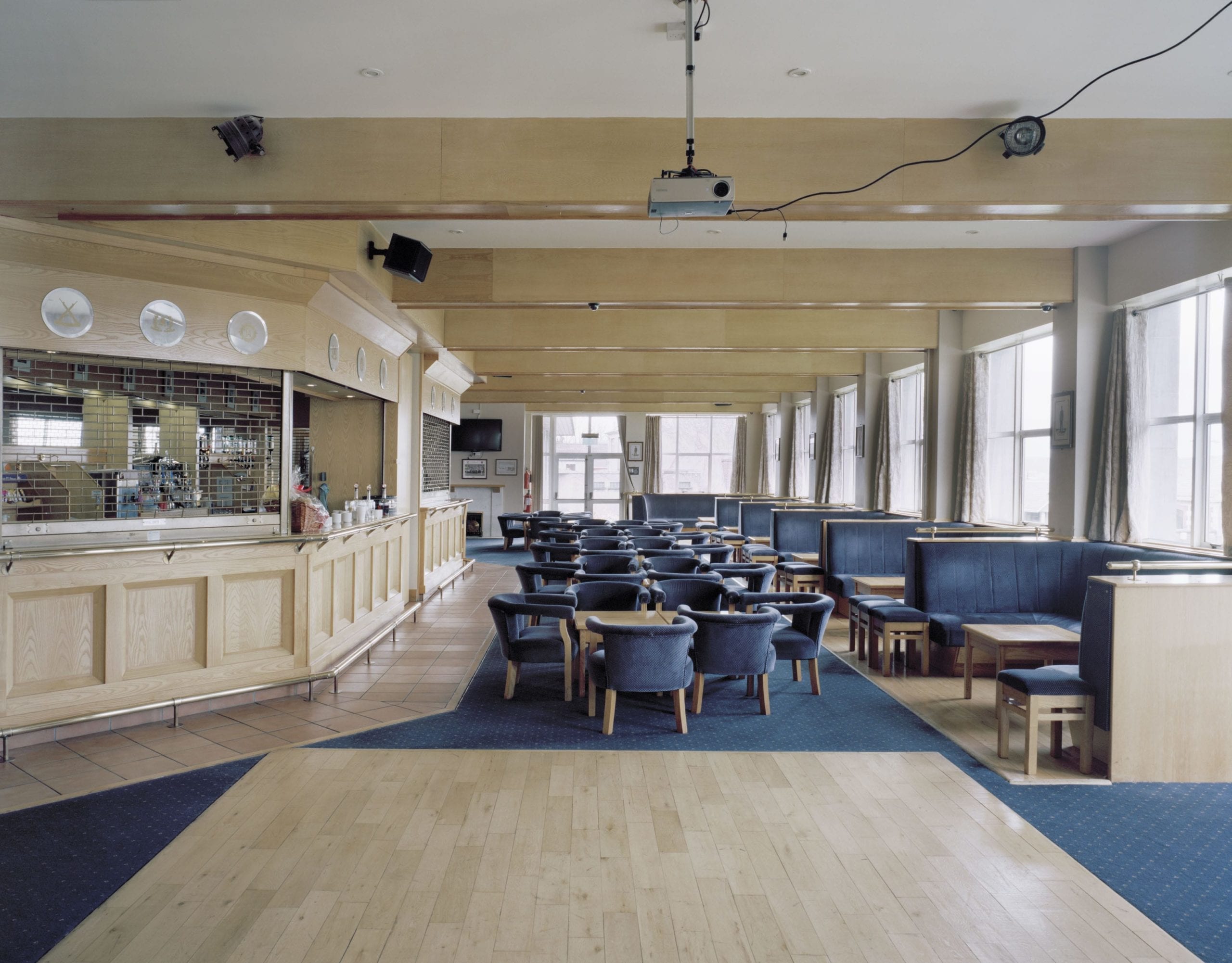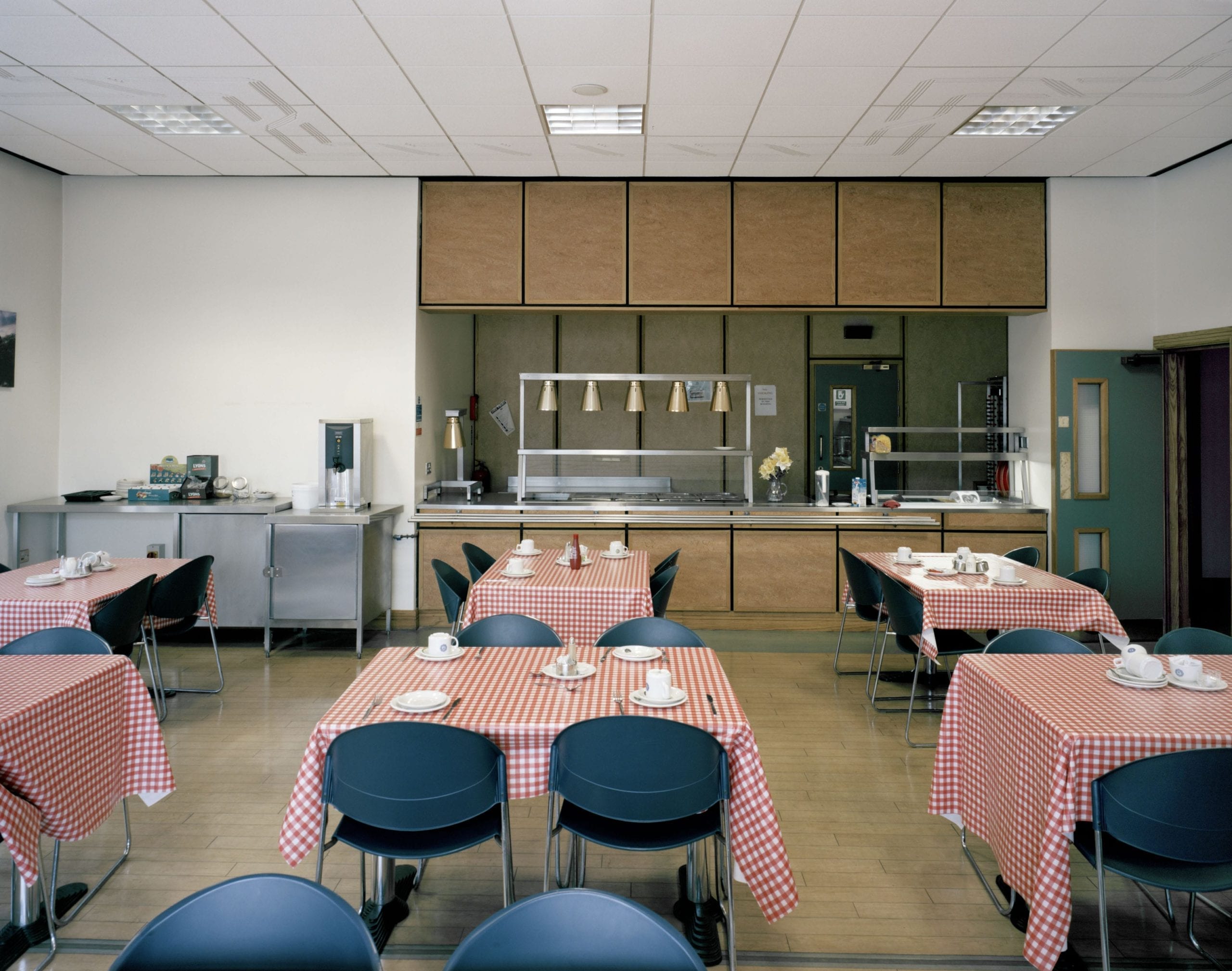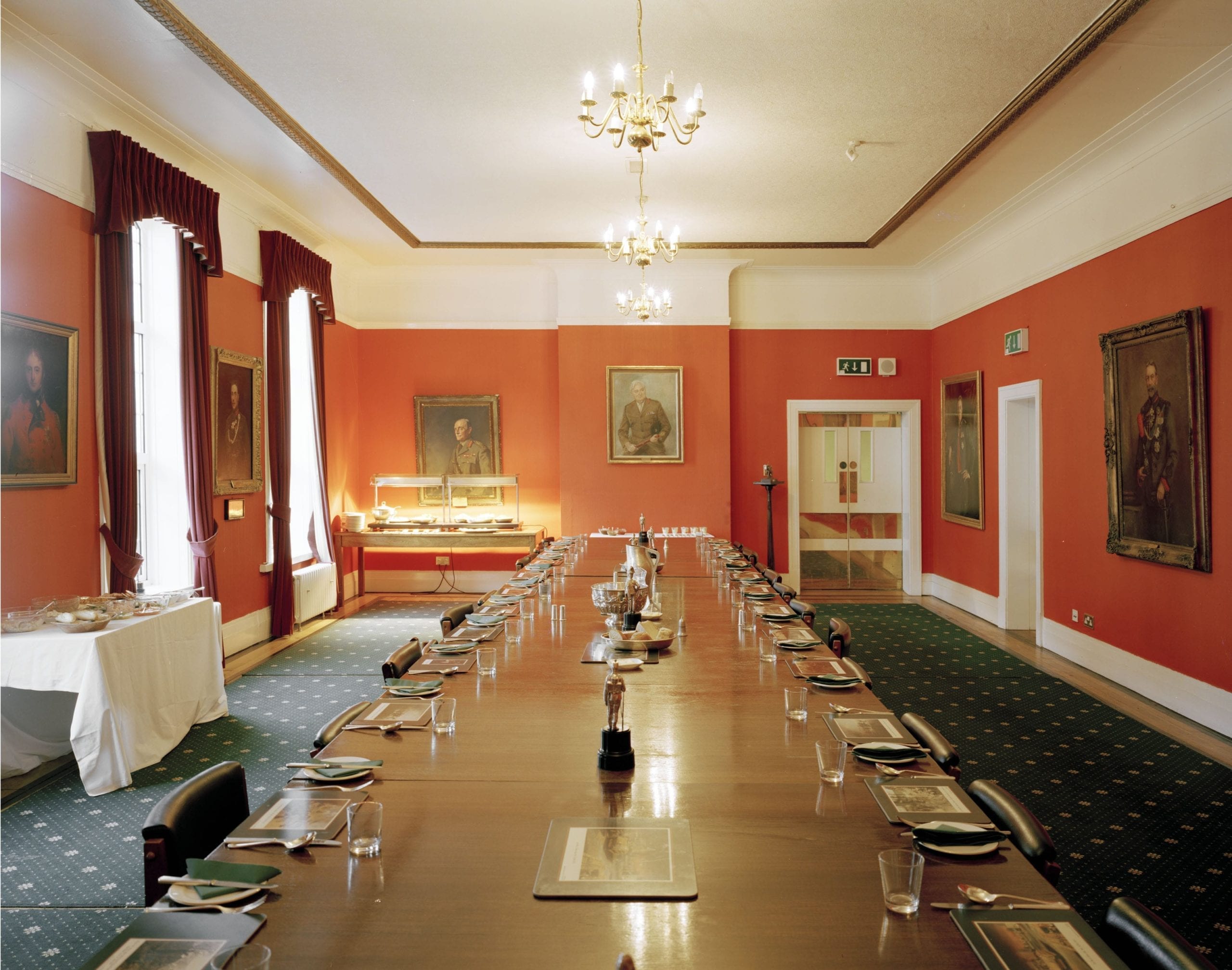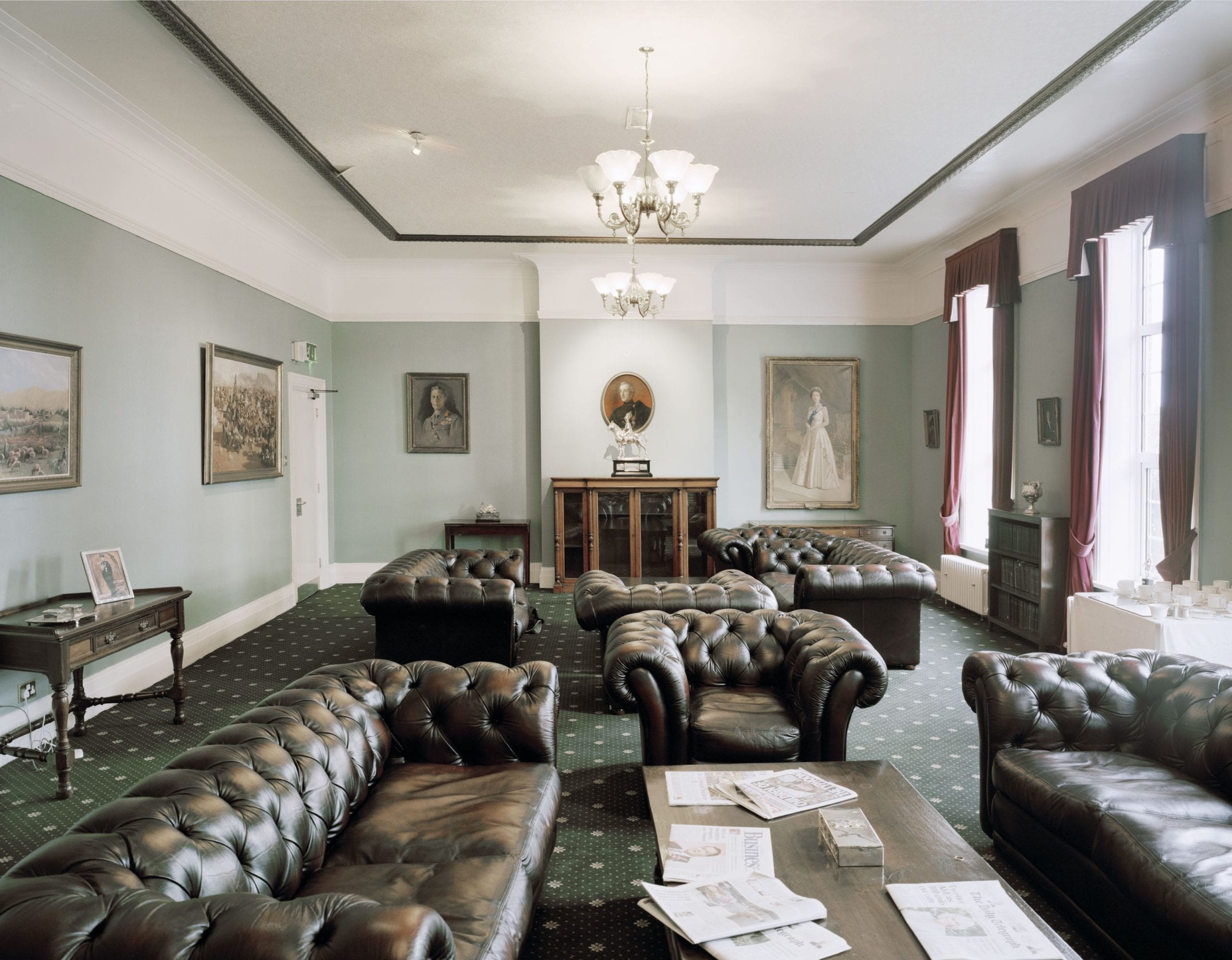Over 2014, Ross Young photographed the military barracks near his home in Belfast. Driving to work in the morning, the 25-year-old would pass the barracks, seeing scattered buildings beyond barbed-wire walls.
“I became really fascinated by the modern military,” he says. “What they do, how they have changed, who they are, what they stand for now.”

The nephew of a lieutenant colonel, he gained access to the barracks and photographed everything: portraits of the soldiers, the buildings, beds, dorms, gyms and churches. But it was the communal eating areas that held his gaze.
“Everything is split by rank. The junior rank, middle rank and officers each have their own spaces, and each one is visibly different,” he says. “They had such an impactful personality. They revealed so much to me about life in the Army. It shows the difference in the ranks; what soldiers have to go through to work their way up.”

He was born in Killyleagh, a suburban area to the south of Belfast, and now lives in the city’s heart. A recent graduate of the Belfast School of Art, an early project saw him photograph caravan sites, exploring how people compose the space they call their own. “I have a genuine fascination with the idea of home, of how people’s lives dictate how and where they live.”

Inherent in that is an interest in class: “The British Army is still so traditional. It hasn’t changed much at all. And there’s still a very distinct class bias. The people with the education and the money get the easy living, and normal people coming into the Army get the absolute basics. There’s definitely a class difference there.”

He’s an avowed student of Donovan Wylie, the Belfast born-and-bred Magnum photographer famous for his studies of Maze Prison, which was used to house paramilitary prisoners during the Troubles from mid-1971 to mid-2000.
“I feel like he’s giving me information about the world, and that’s what photography means to me,” he says.
Find more of Ross’s work here.
First published in the July 2014 issue. You can find the issue, along with more, in the BJP Shop.


